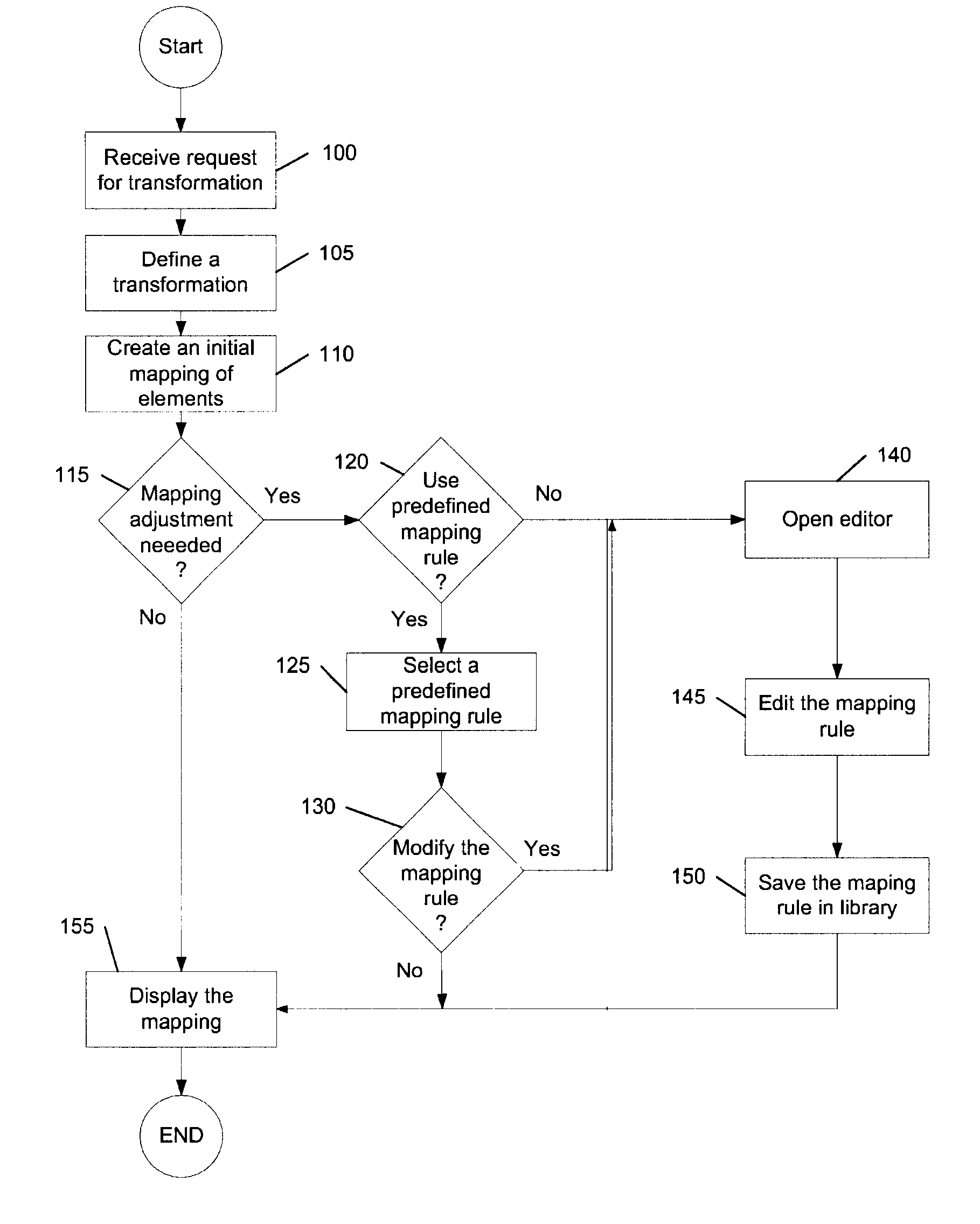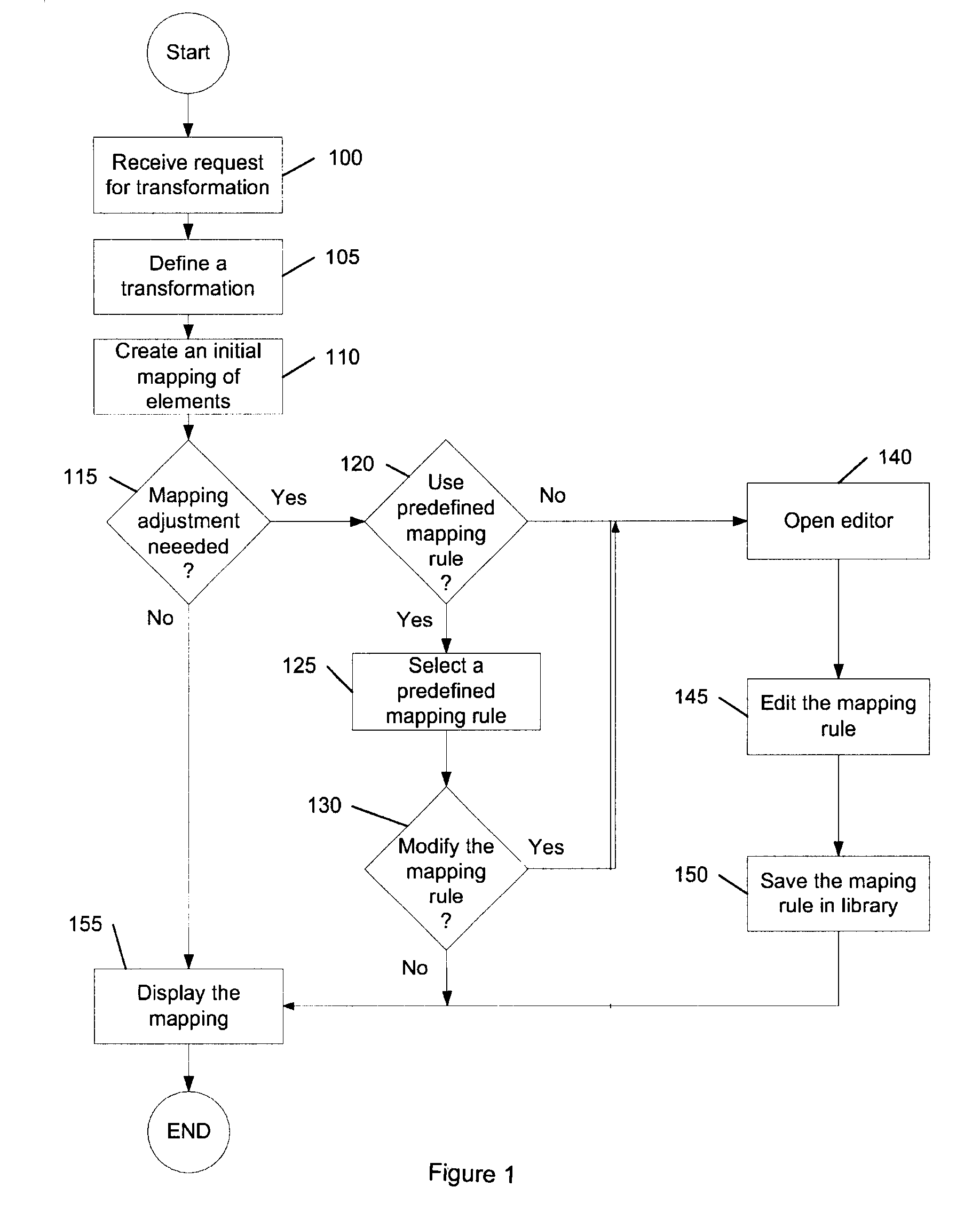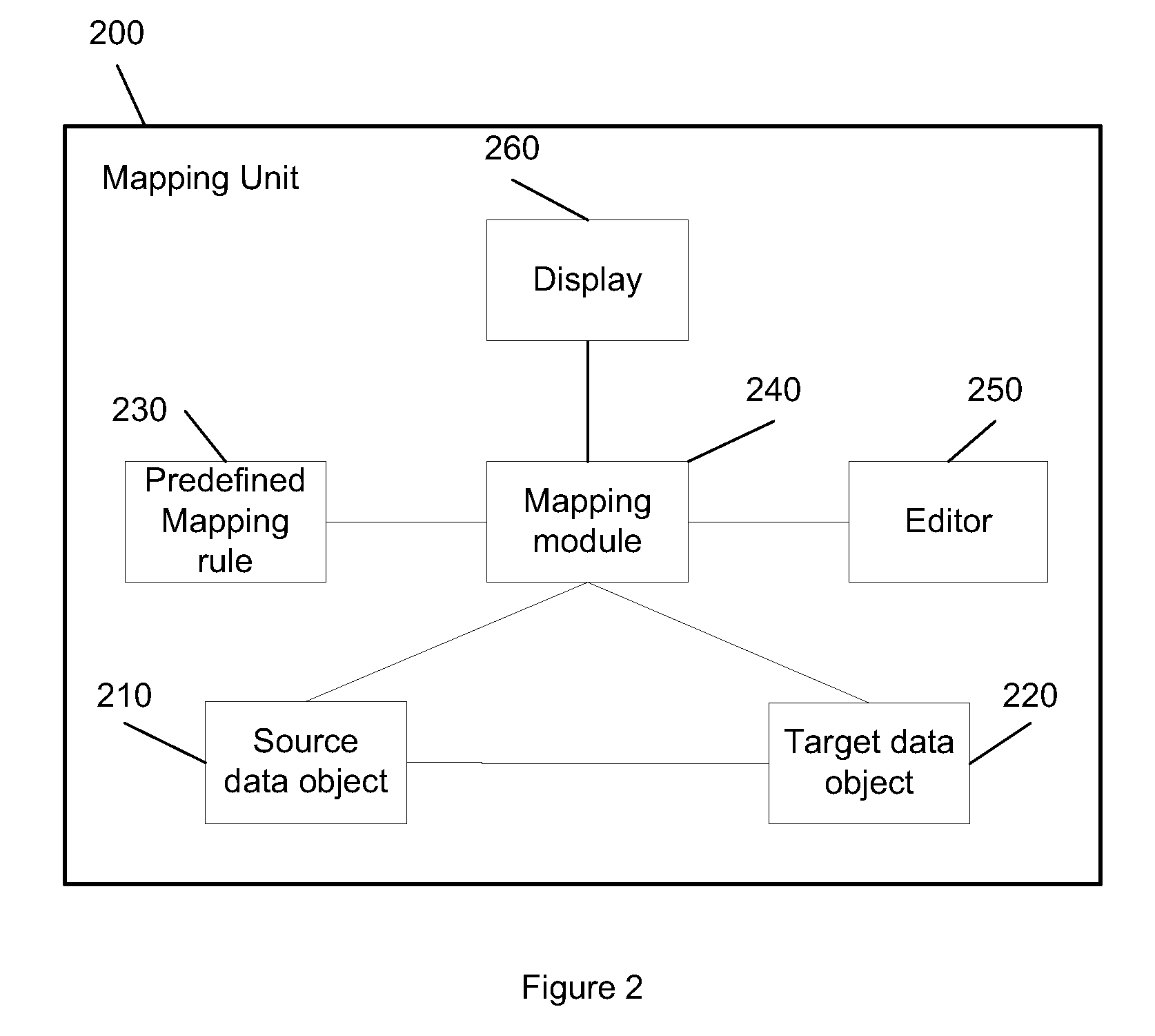Reusable mapping rules for data to data transformation
a mapping rule and data technology, applied in the field of data transformation, can solve the problems of difficult for users to understand what happens “behind the scenes”, mapping a complex problem, and defining this transformation takes time and is quite error-pron
- Summary
- Abstract
- Description
- Claims
- Application Information
AI Technical Summary
Benefits of technology
Problems solved by technology
Method used
Image
Examples
Embodiment Construction
[0014]What is described is a method and a system for data transformation by using predefined mapping rules. A transformation between a source data object and a target data object is defined and an initial mapping of elements from the source data object to the target data object is created. A predefined mapping rule is applied as a subsequent mapping between the source data object and the target data object to adjust the transformation. The mapping from the source data object to the target data object is displayed via a graphical user interface.
[0015]FIG. 1 is a flow diagram of one embodiment for data transformation from a source data object to a target data object. At block 100, a request is received to perform the data transformation. This request may come, for example, through an instruction from a process that operates on a source data object and a target data object. By using a graphical user interface (GUI), such a request may be triggered by simply connecting a source data obj...
PUM
 Login to View More
Login to View More Abstract
Description
Claims
Application Information
 Login to View More
Login to View More - R&D
- Intellectual Property
- Life Sciences
- Materials
- Tech Scout
- Unparalleled Data Quality
- Higher Quality Content
- 60% Fewer Hallucinations
Browse by: Latest US Patents, China's latest patents, Technical Efficacy Thesaurus, Application Domain, Technology Topic, Popular Technical Reports.
© 2025 PatSnap. All rights reserved.Legal|Privacy policy|Modern Slavery Act Transparency Statement|Sitemap|About US| Contact US: help@patsnap.com



